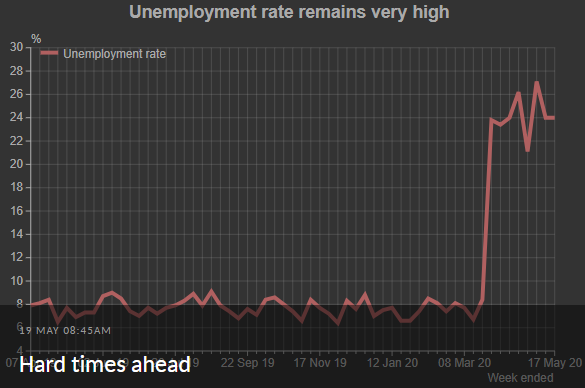I must confess! My outlook towards the repercussions of the pandemic on the markets has taken a bolt. Not that I have entirely changed my stance from this being just a passing cloud but the varied opinions from different corners have educated me about the possibilities that we shouldn’t ignore.
In a recent poll conducted for my LinkedIn community, only 25% of respondents believed that we’ll bounce to normal very soon. On the other hand, approximately 40% believed this will begin a marathon of scary job losses which has just begun while 33% see it as an opportunity to revamp our skills and embrace the digital transformation.

2020 shall not go down in history with any pleasant memory. More than just a pandemic calendar, the year has knocked our socks off with repercussions that are beyond control. As the world economy takes a hit, the employment facet has changed with millions of people losing their jobs. From the unorganized sector down in the hierarchy to the most discussed markets such as IT, no one is spared. Particularly IT that performs closely with all sectors and verticals, is going through a highly volatile phase.
The COVID19 Impact
From the end of March till present, all IT companies have both slashed salaries, sacked employees and even forced LOP leaves for indefinite periods. Consequentially, abrupt job loss emails from the leadership had become a routine. All sorts of predictions from market experts and advisors were found backing the wrong horse.
If the developed economies in the west couldn’t absorb the wrath then imagine the impact faced by countries like India where the unorganized sector accounts for more than 90% of GDP. As per the Centre of Monitoring Indian Economy, the jobless rate in the country surpassed 27% by the beginning of May.

Courtesy – Centre of Monitoring Indian Economy
As per the findings, the unemployment rate in March had broken the record of 43 months. The rate of 8.4% had further risen to 23.4% in April. Scary but the truth!
So are we at risk of 100 million jobs?
Unfortunately, Yes! As per SC Garg, a finance ministry bureaucrat has cited 100 million going unemployed in manufacturing, construction and services. Putting it into figures, close to 14 crore Indians are at immediate risk of losing their jobs. Not only have these times put the careers of their employees trailing by 3 years but have also put the government under extreme pressure to organize relief packages.
In my previous post, I had discussed the government’s readiness to handle the crisis through relief packages for the workers. Besides enabling the moratorium facility for all the employees in the country, the authorities have identified millions of those in the unorganized sector to release the financial aid. As reported by the Economic Times, the government has been planning to release a swaddle of unemployment benefits under the Employee State Insurance Corporation scheme. These include benefits up to 50% of the last drawn salary in recent 3 months. Read more about the government’s readiness to fight the economic crisis here.
An explosive rise of the Gig’s economy has finally arrived
Freelancers and on-demand contractual service providers have been gaining popularity for more than a decade now. These professionals who are known to have adorned skills more than the usual full-time resources are economically more viable for enterprises. Since they are paid only for the tasks they have done, organizations have confirmed saving fixed overheads. It is obvious that those fixed cost roles and profiles that aren’t adding value to the business will be called off. The reporting hierarchies will be shortened and more freelancers will be brought on board. Therefore, except core job profiles, most roles will either be outsourced or assigned to contractual workers.
Next to the sacking of millions of workers, half paid salaries is another immediate reaction that the enterprise sector is facing the criticism for.
When the entire world ushered into lockdown in the last week of March, employees across the industrial facet were shocked to receive emails pertaining to the unfixed amount of salary payouts for the next few months. Since companies are no longer ready to back their employees beyond their capacity, unfixed salary payouts followed by more freelancers on board will change everything. Therefore, variable salaries will now become a mainstream practice wherein employees will have no choice of performing beyond expectations.
Final Word – How long will the job losses continue?
As a business leader, I stand witness to the horrors of job cuts. Having dealt with these circumstances first hand, I believe this is a passing cloud and will soon evade. However, the greater challenge will be to recover the losses within limited means and that’s what the workforce all over the world must get adaptive to.












